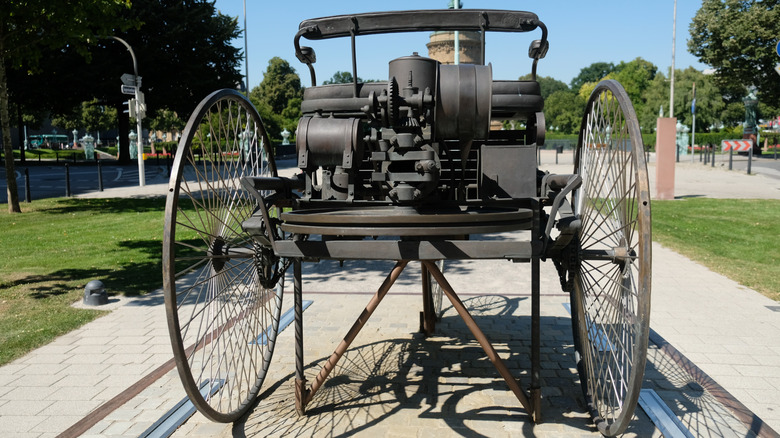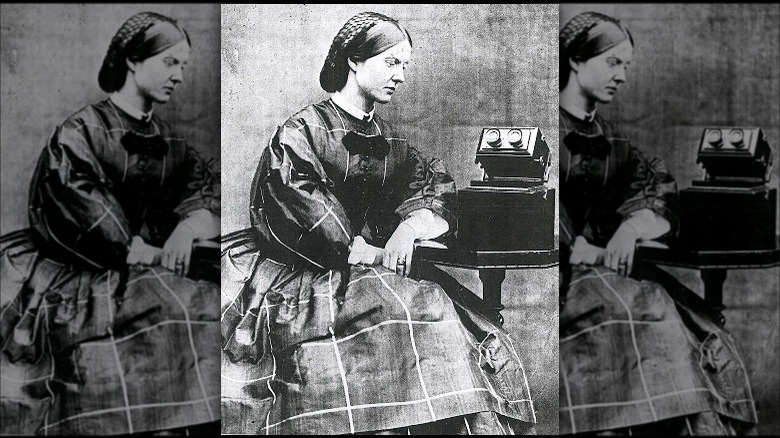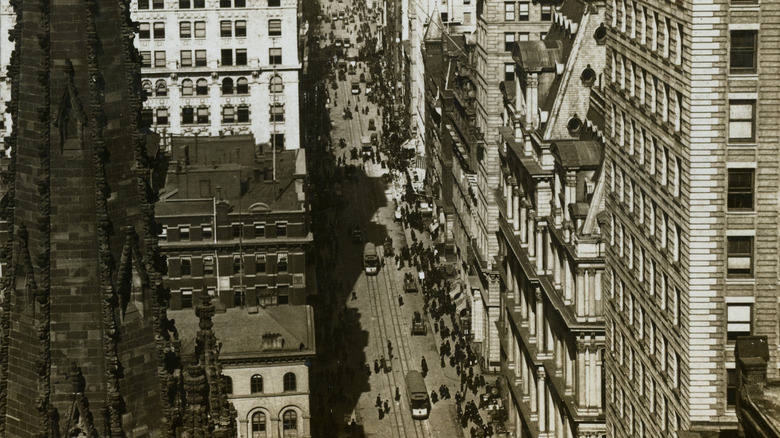Why The First Person Killed By A Car In Recorded History Was A Blow To The Science Community
According to the Centers for Disease Control, approximately 1.35 million people die in vehicle-related incidents per year worldwide, or about 3,700 such fatalities per day. That makes vehicle fatalities the eighth-leading cause of death worldwide. Of course, part of the reason there are so many automobile-related fatalities these days is because of the preponderance of the machines. Billions of people rely on them to get from here to there every day, and for most adults, particularly in developed regions, rarely does a day go by that doesn't involve some time spent in a moving vehicle.
Back when automobiles were first becoming a thing, however, the number of people who could afford one was quite small, and the number of people who needed one even smaller. Further still, the roads were built for pedestrians and horses, not cars. Traffic rules were nonexistent, as were safety features. In fact, history has recorded the name of the first person to be killed by a car, and it wasn't a crash with another vehicle (or a pedestrian or an object) that did her in. Rather, it was the crudeness of the roads and the lack of safety features in her contraption. Unfortunately, she was also a prominent scientist — at a time when few women were in the field.
The First Cars
Nailing down when the automobile was invented is difficult for a variety of reasons, not the least of which is the fact that the definitions of words like "invent" and "automobile" are subject to interpretation. Nevertheless, according to the book "Patents: Ingenious Inventions, How They Work, and How They Came to Be," as early as 1769 or 1770, a Frenchman named Nicolas-Joseph Cugnot had invented the first vehicle capable of moving on its own power (viz, without a draft animal to pull it).
Over the next century, as the Science History Institute podcast notes, tinkerers and would-be inventors built their own "horseless carriages" using steam, electricity, and gasoline. According to The Irish Times, one particularly well-heeled family was the Parsons, whose patriarch had built a "steam-powered jalopy," as the podcast calls it, in the family garage (or the ancient Irish castle equivalent). Not only was the Parsons family well-off, but they were also inclined to science, according to Ireland.ie. And one Parsons cousin was a woman named Mary Ward, herself possessing an interest in science, who would meet her untimely end while riding her family's homebrew death trap.
Mary Ward, Woman Scientist
These days, valiant efforts are afoot to get teenage girls interested in science, engineering, and related fields. Two centuries ago, however, the idea of educating women and girls in science was unthinkable. Mary Ward, however, said nuts to that; her family included well-known scientists of her day, and of course, money talks, so the scientific community of the British Isles at the time tolerated her, to a point. For example, as the Science History Institute podcast explains, in her day, she was one of three women on the Royal Astronomical Society's mailing list, the others being an American astronomer and Queen Victoria herself.
Her family, however, saw great potential in her and invested in her pursuits, figuratively and literally. As a young lass, she'd taken an interest in documenting what she saw in nature, and as the Linda Hall Library explains, her father purchased a microscope for her – an extraordinarily expensive item at the time. By the time she was 17, she'd built — by herself — the largest telescope in Ireland (The Irish Times claims that it was her cousin who had built the telescope).
Unfortunately, it was her family's fondness for science (and, indirectly, their money) that ended up being her undoing.
The Fatal Accident
By the time she was in her mid-40s, Mary Ward's financial situation had soured considerably due to her husband's lack of interest in working; though he had peerages and titles, he lacked actual money, and "honorifics couldn't pay for childcare" as Science History Institute notes. Further still, Mary had birthed multiple children in a brief period of time, and there were mouths to feed.
One day in August 1869, Mary took a vacation, of a sort, to her cousin's castle. The exact sequence of what happened next is unclear, but at some point, someone suggested going for a ride in the family's steam-powered car, and far too many people were crammed into the small machine. At some point, the vehicle — described by a passerby as "traveling at an easy pace" (per Science History Institute) — took a curve, and somehow, Mary got thrown from the vehicle. How or why remains uncertain; perhaps the vehicle was moving too fast, perhaps it hit a rock or pothole or something. Either way, the machine, lacking modern safety features such as shock absorbers or even seat belts, tossed the woman from its seat. It then proceeded to run over her, fracturing her jaw and skull in the process. A doctor who was nearby arrived on the scene, but it was too late — she was dead within minutes. Rumor has it that the family later dismantled the car and buried it, never to drive it again.
Mary Ward's Legacy
By the time of her death, Mary Ward was less of a groundbreaking female scientist and more of a harried, middle-aged mother trying (and largely failing) to make ends meet. Had life turned out differently for her, however, she might have gone down in history not for being the first person killed in a car accident, but for her contributions to science.
As the Linda Hall Library notes, Ward published a book, "Sketches With The Microscope," which contained her hand-drawn sketches of things she'd seen with her device; remember, at the time, a microscope was an impossibly-expensive bit of equipment that few outside of universities could have afforded. "In the years she did have, Ward's scientific output was impressive enough. But if the seating arrangement on the steam car [had] been different that day ... there's no telling what Ward might have accomplished," notes the Science History Institute podcast.
In a rather cruel irony, a few years after she died, her husband inherited a title and a peerage — both meaningful and lucrative rather than just platitudes — and was finally wealthy. Her children never saw want or privation again, and Ward might, just might, have gone on to produce more scientific output, considering that she'd have had servants to do housework and mind the children and money to invest in better equipment.
The First Car Crash Fatality
Mary Ward is almost certainly the first person to have been killed due a mishap involving a moving car, but it was a single-vehicle accident that didn't involve a collision. It was another couple of decades before the first confirmed fatality involving a collision took place. That "honor," such as it is, also goes to a woman. As the Guinness Book of World Records reports, in 1896, Bridget Driscoll was struck and killed by a car moving at the speed of 4 miles per hour as it was giving a demonstration in London. The National Motor Museum reports that the accident fractured her skull.
Readers in the United States may have noted by now that both of these deaths took place across The Pond. Here in the States, the first car-related fatality took place in 1899, a couple of short years after Ms. Driscoll's death. As Smithsonian Magazine reports, a Mr. Henry Bliss deboarded a New York City streetcar and was promptly struck and killed by an electric taxi (at the time, there were far more electric vehicles on the streets than there were gasoline-powered ones).





